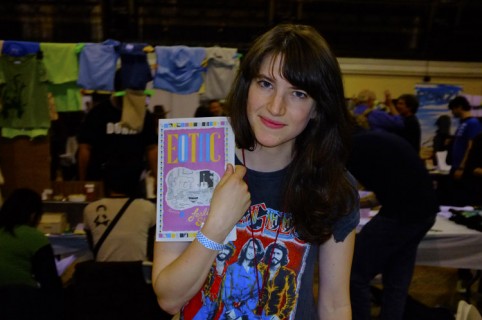
Scrappy, independent artists have always been drawn to indie comics because of the their solitary nature — the cartoonist will usually be the writer, artist, editor, and sometimes even the publisher of his or her work. But being a cartoonist almost guarantees having a tight belt — you don’t even typically get all that rich working in mainstream comics. How to make it all work? To find out, I interviewed three well-known indie cartoonists based in Brooklyn:
• Leslie Stein writes and draws an autobiographical comic called Eye of The Majestic Creature, which was recently compiled into a book by Fantagraphics.
• Brendan Leach has worked for clients including The New York Times, Moleskine, xBOX, Sportscenter and The L Magazine. He has also published a book, The Pterodactyl Hunters via French publishers Ca et La, which is distributed by Top Shelf Comics.
• Lisa Hanawalt has done work for The New York Times, Vice Magazine, The Believer, Vanity Fair, McSweeny’s and many others. She illustrated the book Farts Around The World, complete with push-button fart sound effects. She also has a series of award-winning mini-comics.
Here’s what they have to say about staying afloat while managing your art, freelancing vs. day jobs, and what makes this place so goddamn special anyway.
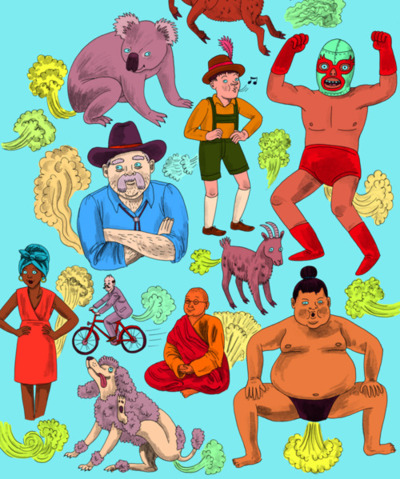
So, can you make a living in comics?
Brendan: It becomes a question of what kind of sacrifices you are willing to make in your life. You can treat making comics like a hobby, and get a day job. But that never really worked for me. I quit my job and went to grad school for Illustration. That gave me two years to focus on comics and drawing. Plus grad school is good for making connections. You can get your foot in a few more doors that weren’t open before. But then you are in a mountain of debt.
This is the kind of thing that every artist struggles with and I don’t think there is any one answer. I prefer to have a lot of small jobs rather than one full-time day job. I do some freelance illustration, some teaching gigs, some hours doing art handling. But it’s always a matter of sacrifice and priorities. I stopped going out to bars because I’d rather eat food and draw.
Lisa: I’ve moved furniture for money, worked as a librarian, worked at a doggy day care. For two years I was a personal assistant/secretary/saleslady for a guy who made and sold his own camera equipment, and I learned everything: marketing, customer service, selling stuff at conventions, to doing taxes…and all that knowledge has been incredibly helpful to me as a freelancer. I worked from 10-4 (with an hour commute each way), then came home and made art almost every evening. Obviously I wasn’t dating much back then, but I got so much better at drawing during a relatively short period of time and it eventually led to a fruitful career. The important thing is to spend time making things every day, really make it a priority.
Leslie: Right now I work in a bar/restaurant. I’ve worked a lot of odd jobs in NYC. My first job here was at Kim’s Video on St. Marks. I worked as a dress shop in the East Village too, and briefly as a cell phone decorator. I’ve worked in an office doing mailroom activities, I’ve been a bartender, and currently am a server. Basically my goal has always been to find work that allows me to have a lot time to work on my comics. Right now I work three nights a week, so I can draw everyday, which is great.
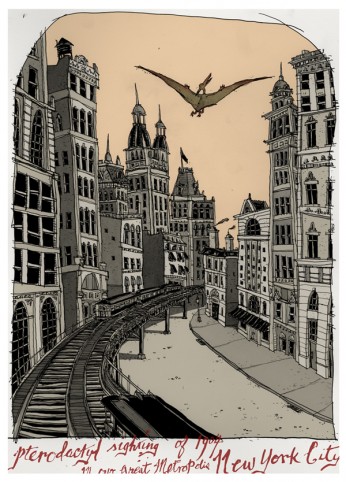
What are your favorite places to read or buy comics?
Leslie: I go to Desert Island in Williamsburg when I want to pick up new and exciting books. It’s my favorite comic shop. The library nearest to me has a very small and eclectic comic selection, so I go there and look through and find comics I wouldn’t normally be interested in buying right off the bat. Prospect Park is a great place to sit and read in the summer, and in the winter I read comics in bed before I go to sleep.
Brendan: My favorite comics shop is Desert Island. It’s in my neighborhood and Gabe is a nice guy. The other place is Bergen Street Comics.
Lisa: I like reading comics in the bath (peeps who read this are never gonna lend me comic books again). I don’t buy comics very often, I’m trying to cut down on collecting books. But every once in awhile I’ll treat myself at Desert Island.
How does living in Brooklyn influence your comics?
Leslie: I love drawing New York; it provides so many details for street scenes, from all the shops and people to seemingly insignificant things like takeout menus shoved in doorways and gum spots on the cement. The energy of New York is very inspiring. Everyone is here for a reason; everyone is creative.
Brendan: I feel a major nostalgic and sentimental connection to Brooklyn because my family is from here. I didn’t grow up in the city, but my parents and grandparents did. My Dad told me he used to stare at the Williamsburg Bank Building from his high school window, so now I think of that every time I look at it. Same thing in Manhattan, I used to work around the corner from where my grandparents met. I like walking past my mother’s childhood grammar school. Yuck, this is pretty sappy. And if i really start talking about it I will sound like a hippie, but I think there’s a strong emotional relationship with your physical surroundings.
How do you get your work out there?
Brendan: Almost all of the people I’ve meet through comics are really nice and welcoming. It doesn’t take too long to realize that no one is getting rich off comics, so there’s no cutthroat competition. There’s very little separating people starting out making comics and more well know artists that have been doing it for a while. For the most part everyone is very approachable and friendly. The best course of action is just to be making the best comics you can and Xeroxing copies and handing them out. Hand them to your favorite artists at the Brooklyn Cartoon and Graphics Festival. Sell them on consignment at Desert Island and Bergen Street comics.
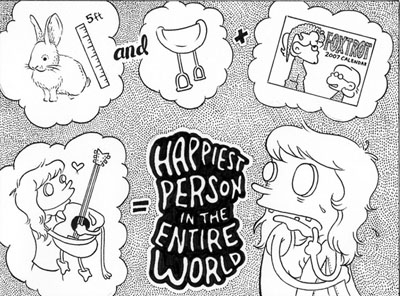
How do you schmooze publishers?
Brendan: Schmoozing with comics publishers is not going get you a book deal or anything. But like I said, everyone is friendly. So when you make your comics and get them out, you should also be giving them to publishers that you like. Usually the publishers are standing at their tables at the conventions, so it’s very easy to strike up a conversation. But you can’t expect anyone to call you up and ask if you’d like to get started on a graphic novel for them and hand you an advance. You have to be self-motivated. If a publisher likes your work and sees that you are working hard on your own and that you’re going to write these comics no matter what, you might find a publisher to put it out when you are finished. The most important thing is to be self-motivated.
Lisa: I feel like schmoozing should just happen accidentally and come out of making interesting work (like selling zines) that people want to talk to you about. But maybe I’m just not a very pushy person — I have a “wait for them to come to me” philosophy that wouldn’t work for everyone. Also now I have a literary agent to contact publishing houses for me — I highly recommend getting an agent for anyone who’s eager to get a book published.
What’s the best way to get your work out there?
Brendan: Everybody needs a website. Indexhibit, cargo collective, and Squarespace are all good ways to easily get a portfolio online. Blogs like Tumblr or WordPress are great for doing a daily or weekly updated content. Which is important because it shows you are working. Full disclosure: I am TERRIBLE about posting new work. This is good advice that I’ve gotten elsewhere and should listen to.
Leslie: I have a Tumblr, which I chose because it’s so easy to use. Full pages of art don’t seem to fit and you can’t read them too well, so I just put a series of panels up to show as examples of what I’m working on. Because I make to my work to look good in print, not on the web, this doesn’t really bother me.
Do you need a studio?
Brendan: I share a studio space with some amazing artists and illustrators. I’m not too productive if I work at home, and having people to talk to about your ideas or work is pretty valuable. Also when you are working hard on something it’s difficult to tell if it sucks or not. In the studio I can say “Hey, does this suck?” and they say, “Yes. That sucks.”
Lisa: I work at home, my desk is set up in a corner of our living room. for a year I was sharing a space with six other cartoonists but we recently gave up our lease because it was pricey and a few of us were moving away. I love working at home as long as I remember to get outside once in awhile.
Where do you draw?
Leslie: Bar napkins are big for me. The dry erase board in the kitchen where I work.
Lisa: I draw at The Met, Central Park, at a friend’s house, at any bar or cafe. Pretty much anywhere that isn’t inside my apartment!
Ever try to barter your drawings for food, services, beer, a car, a boat, etc?
Leslie: Just for sex.
Lisa: I’m constantly trying to barter my drawings for boats! I sometimes daydream about doing illustrations for a fashion label and getting paid in stupid shoes, but so far the only things I’ve traded for have been other drawings, bottles of wine, and dollars.
What’s your best advice for young, broke artists?
Lisa: I could describe every step I took in life in detail, but the only things that have consistently mattered are:
1. Making drawings, lots and lots of drawings
2. Being critical and curious about the world and my place in it
3. Putting my drawings where people will see them
It’s that simple. It takes a long time, there aren’t really any shortcuts, and no two artists are going to take the exact same steps.
5 Comments
Leave a Reply

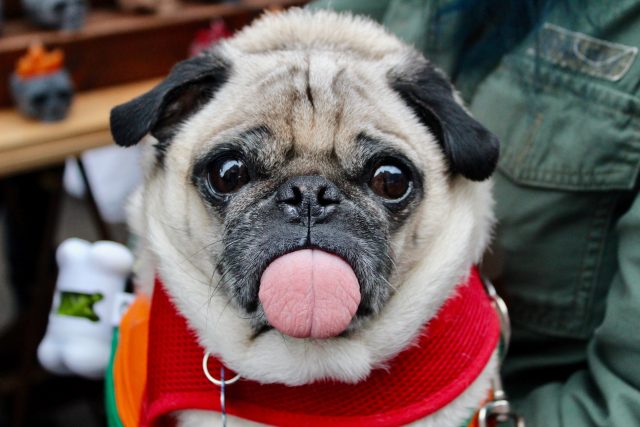

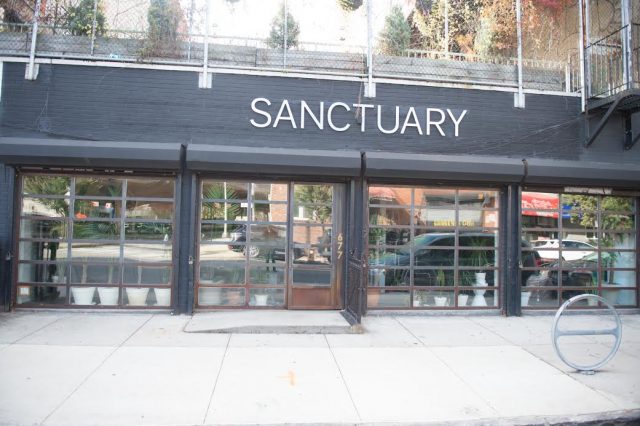
I really enjoyed this article. I love Lisa’s last three bullet points, too. Probably the three truths to success in any field.
Delightful article. And it’s true; in writing and cartooning, there aren’t really any shortcuts. Just work hard and be good at what you do.
These are good thoughts. But what do you do if you you’ve got no talent but can’t imagine doing anything else?
Talent has nothing to do with it. I went to art school with a lot of people who had almost zero skill when they started, but they kept drawing, kept learning, kept studying other artists, kept drawing, kept finding inspiration, kept drawing and after a while they were great.
“Talent is luck, the important thing in life is courage.”
-Woody Allen
Heh, non of this means anything if you aren’t in with the Brooklyn clicks.